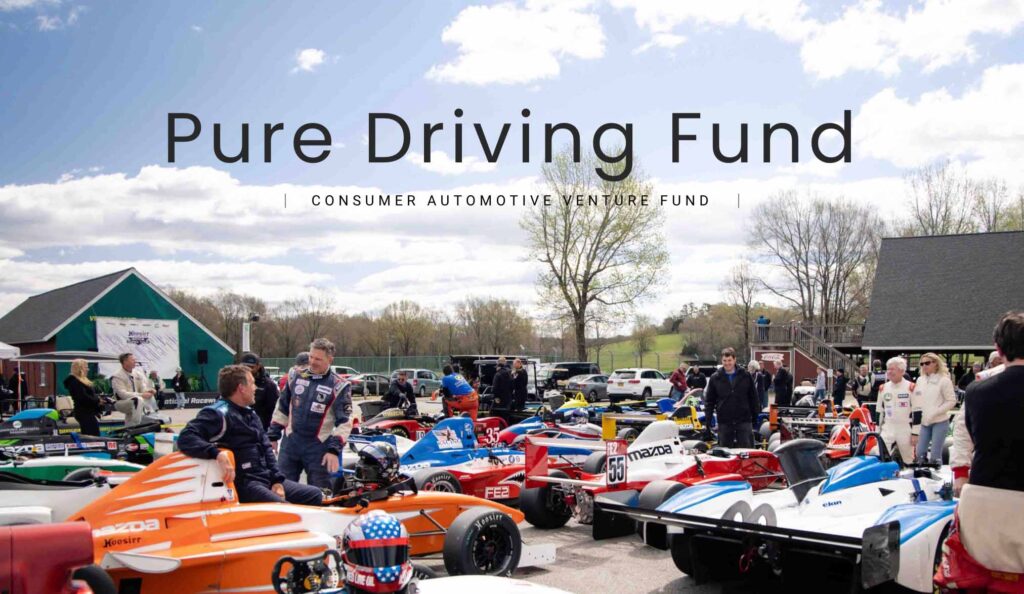Protecting your automobile’s pristine finish has always been a top priority for car enthusiasts. Paint protection film (PPF), also known as clear bra or automotive film, has emerged as a popular solution to safeguard your vehicle’s exterior from the rigors of everyday driving. Who invented it? 3M, to protect military helicopter blades.
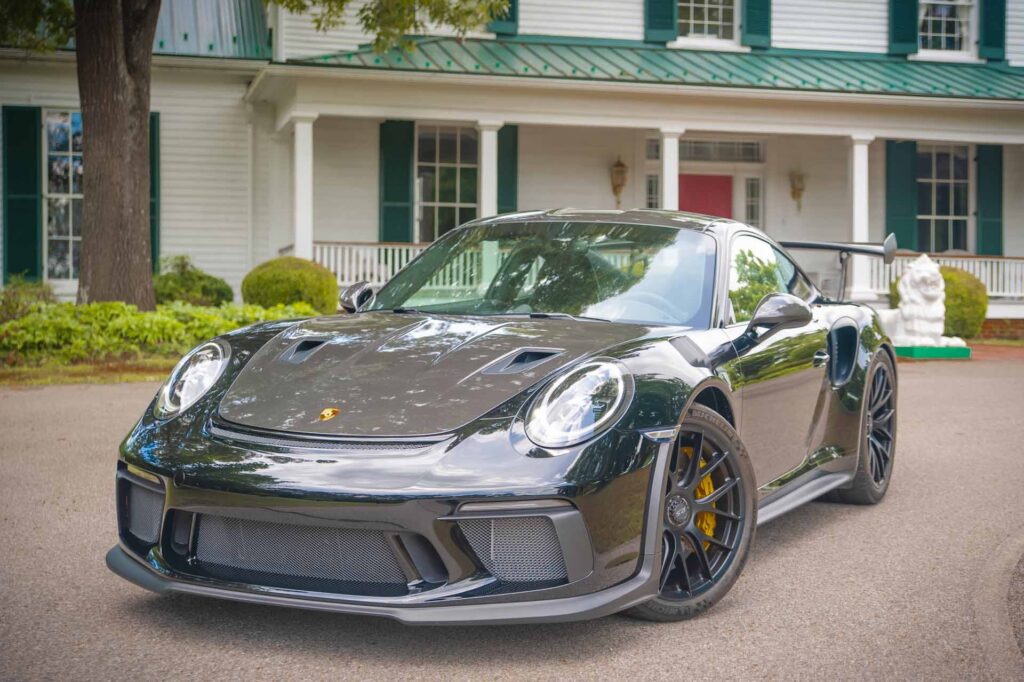
Image: The Starting Line (sold on Bring a Trailer, listing here)
In this article, we’ll delve into the pros and cons of automotive paint protection film, helping you make an informed decision about whether to invest in this technology.
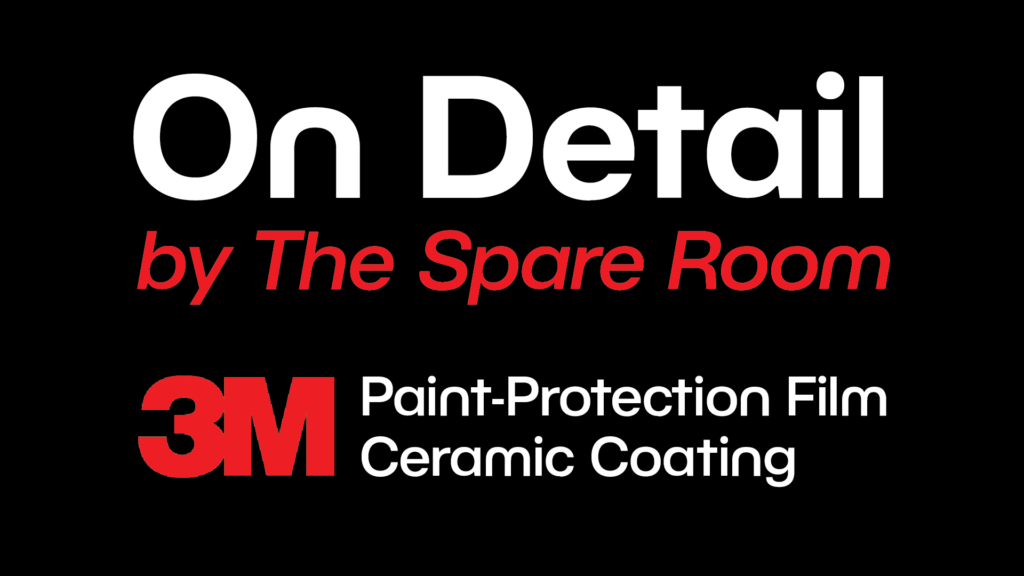
Pros of Paint Protection Film
-
- Shield Against Physical Damage: PPF is a clear, durable, and self-healing film that provides a protective barrier against various physical threats. It shields your car’s paint from rock chips, scratches, and minor dings caused by debris on the road.
-
- UV Protection: PPF offers excellent UV resistance, preventing the sun’s harmful rays from fading or damaging your car’s paint over time. This helps maintain the vehicle’s aesthetic appeal and resale value.
-
- Self-Healing Properties: One of the most significant advantages of PPF is its ability to heal minor scratches and swirl marks. The film’s top layer has a self-healing characteristic that can remove superficial damage when exposed to heat, such as sunlight or warm water.
-
- Preservation of Paint Quality: PPF acts as a sacrificial layer, absorbing damage that would otherwise impact your car’s original paint. This preserves the factory finish and keeps your car looking new for longer.
-
- Enhanced Resale Value: A well-maintained PPF can enhance your vehicle’s resale value. Prospective buyers are often willing to pay more for a car with protected paint, knowing it has been well-cared for. This can be critical for rare models and collectibles where even one rock chip can lose you a sale or severely depress your price.
-
- Will you get your money back when you sell? Probably not, but in our experience it does seem to make the sale process easier. Plus, our protected cars have anecdotally maintained more of their value.
-
- Enhanced Resale Value: A well-maintained PPF can enhance your vehicle’s resale value. Prospective buyers are often willing to pay more for a car with protected paint, knowing it has been well-cared for. This can be critical for rare models and collectibles where even one rock chip can lose you a sale or severely depress your price.
-
- Easy Maintenance: PPF is relatively low-maintenance. You can clean it just like your car’s regular paint, using soap and water or a car detailing product. This makes it convenient for car owners who want to keep their vehicle looking pristine without much hassle.

Cons of Paint Protection Film
-
- Cost: One of the most significant drawbacks of PPF is its cost. The material itself, along with professional installation, can be quite expensive. How expensive? Going rate in the DC area is about $2,000 for a front bumper, $3,000 for full front coverage including the hood and $8,000 or more for a full vehicle wrap. Despite the cost, many car owners view it as an investment in the long-term preservation of their vehicle.
-
- PPF Doesn’t Protect Against Everything. I bought an Audi S6 new in 2017 and had film installed almost immediately. Next thing I know, I’m on the Capital Beltway and a medium-sized rock flies off a gravel truck in the adjacent lane. It pierced the film and chipped the paint. Nothing would have helped in this case, the rock had decent heft – and it was jagged. Had to have the chip repaired and that panel’s film replaced. The hole was too big to “self heal”.
-
- Installation Challenges: While professional installation is essential for a seamless finish, finding a skilled installer can be a challenge in some areas. Poorly installed PPF can lead to bubbles, creases, or an uneven appearance, which can be frustrating.
-
- Limited Coverage: PPF typically covers the most vulnerable areas of a vehicle, such as the front bumper, hood, fenders, and side mirrors. However, it may not protect the entire car, leaving some areas vulnerable to damage.
-
- Visible Edges: PPF can sometimes have visible edges or seams, especially if it’s not applied correctly. These edges can be noticeable in certain lighting conditions and may detract from the car’s appearance. This is especially common if installers use cost-cutting and time-saving approaches like pre-cut kits can lead to other issues including incomplete coverage, and resulting unprotected painted surfaces.
-
- Replacement and Maintenance: Did you know you can’t take a car with PPF through a mechanical car wash? Brushes and high-pressure streams In touch-free washes can dislodge the film. So can portable pressure washers. So this means if you choose PPF, you’re also choosing to hand wash (or have your car hand washed). PPF also has a finite life span, so eventually it will need to be replaced.
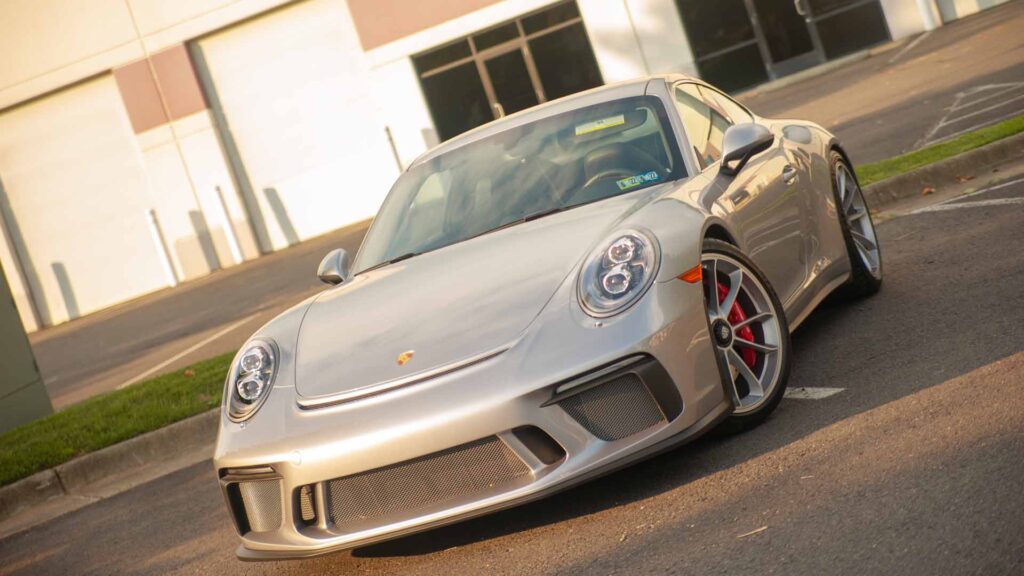
Image: The Starting Line
If you decide to go ahead with PPF, here are some tips to consider.
Tips to Consider
-
- Quality of installation – as with everything, do your homework. Check out online installers’ online ratings. Better yet, talk to people who’ve had installs and learn about their experience. The barrier to becoming a PPF installer is relatively low, so you want to make sure whatever shop you choose has a decent history — and that they will be around long enough to provide warranty service if and when the time comes.
-
- Our recommendation? Aim for official retailers of known PPF brands like 3M and XPEL – they’ve already been vetted and have to maintain certain standards to achieve and maintain the retailer status. Their work reflects on the brand, so they’ll be extra motivated to do a fantastic job for you. What about certified installers? We think any brand certification is fine. There’s enough mobility in the industry, that you’ll often find top-flight installers who have certifications from one brand working in a shop that sells a different brand.
-
- Quality of installation – as with everything, do your homework. Check out online installers’ online ratings. Better yet, talk to people who’ve had installs and learn about their experience. The barrier to becoming a PPF installer is relatively low, so you want to make sure whatever shop you choose has a decent history — and that they will be around long enough to provide warranty service if and when the time comes.
-
- Quality of film / warranty – Does brand make any real difference? Anecdotally, they don’t seem to. Enthusiasts head nod for any of the major brands. Where we would be concerned is an installation with an undisclosed brand and no warranty documentation. That would suggest the film carries no assurances and could be coming from anywhere. By contrast, 3M, Stek, SunTek, and XPEL all offer up to 10-year warranties on their film for things like yellowing, bubbling, and cracking. This wouldn’t cover misapplication or damage but does help make sure you can expect your film to last a long time.
-
- Ceramic coating – PPF protects your paint, but you still have to keep your car clean to look its best. Additional treatments can also be needed to make it really “pop”. One of the most common is ceramic coating (yes, we’ll do an article on that soon). In our experience, the combo of gloss PPF plus ceramic coating results in a truly head turning finish.
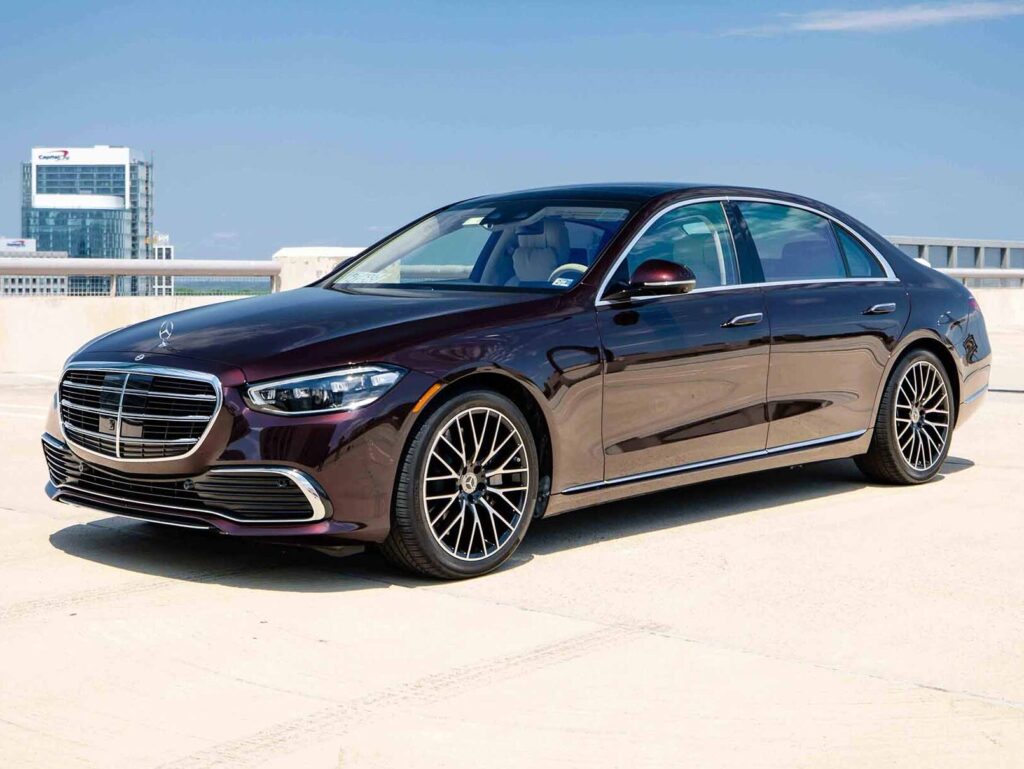
Image: RSC Motors
In conclusion, paint protection film offers several compelling advantages for automobile owners, including protection against physical damage, UV rays, and the preservation of paint quality. These benefits can enhance the longevity of your finish and help maintain resale value of your vehicle. However, you should always consider the cost and what it’s like to live with a wrapped car day-to-day including having to wash it manually.
